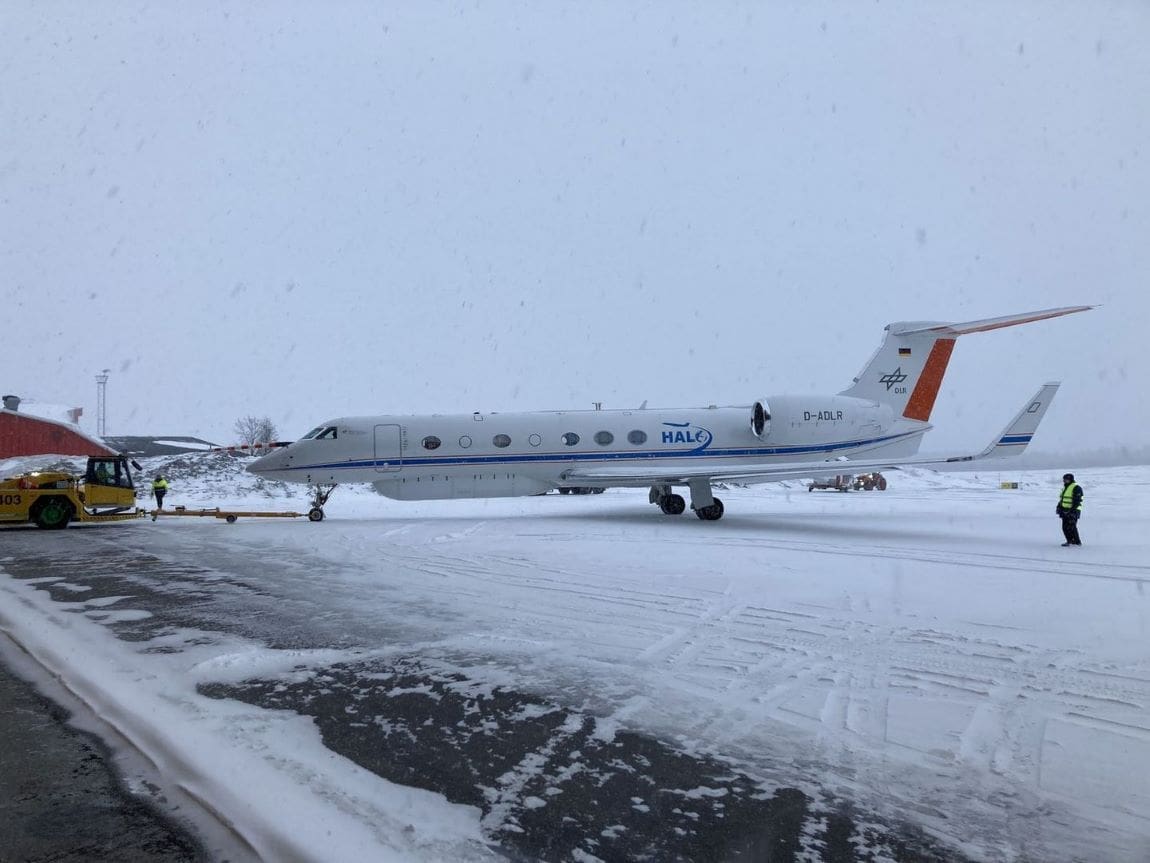Researchers are making significant strides in understanding the complex climate dynamics of the Arctic, particularly in how air masses move and transform within this rapidly warming region. This work is crucial for improving the reliability of climate models, which often struggle to accurately represent the processes driving Arctic weather and climate.
The study’s initial findings, published in Atmospheric Chemistry and Physics by the European Geosciences Union (EGU), underscore the importance of such comprehensive research in predicting the future of our planet’s climate.
Led by Professor Manfred Wendisch, Director of the Institute for Meteorology at Leipzig University, the HALO (AC)³ campaign is a large-scale international research initiative that began in mid-March 2022. The campaign brought together scientists from various institutions to study the movement of air masses in the Arctic, focusing on two key phenomena: northward moist- and warm-air intrusions (WAIs) and southward marine cold-air outbreaks (CAOs). These air movements are critical in shaping the Arctic’s climate, influencing everything from temperature changes to cloud formation.
The campaign involved deploying three specialized aircraft – two low-flying and one long-range, high-altitude research aircraft – over the Norwegian and Greenland seas, the Fram Strait, and the central Arctic Ocean. These aircraft were flown in close formation whenever possible to track the changes in air masses as they moved across different regions, including areas of open ocean, marginal sea ice, and central Arctic sea ice.
A novel observation strategy allowed researchers to measure the same moving-air parcels twice along their pathways, providing unprecedented data on how these air masses change over time. “This allowed us to quantify the warming and cooling of the transported air masses for the first time,” says Professor Wendisch.
For example, the research showed that cold air moving south from the Arctic can warm by up to three degrees Celsius per hour as it travels from sea ice to open water. The data also revealed that as air moves southward, its humidity increases, influencing cloud formation and other weather patterns.
The HALO (AC)³ campaign is particularly important because global warming is amplified in the Arctic, yet current numerical models have difficulty accurately representing the region’s key climatic processes. By collecting detailed data on air mass transformations, the researchers aim to improve these models, making predictions of Arctic warming more reliable. This is crucial for understanding the broader impacts of climate change, as the Arctic plays a significant role in global climate systems.
In addition to temperature and humidity changes, the researchers studied how air mass movements affect cloud properties, including cloud-top height, horizontal cloud cover, and precipitation. These findings are being compared with calculations from the German weather forecast model to refine the understanding of Arctic climate processes further.
The study represents a major step forward in understanding how the Arctic climate is evolving and how these changes might affect the rest of the planet.
As the Arctic continues to warm at an unprecedented rate, studies like HALO (AC)³ are essential for developing more accurate predictions and preparing for the future impacts of climate change.
Journal Reference:
Wendisch, M., Crewell, S., Ehrlich, A., Herber, A., Kirbus, B., Lüpkes, C., Mech, M., Abel, S. J., Akansu, E. F., Ament, F., Aubry, C., Becker, S., Borrmann, S., Bozem, H., Brückner, M., Clemen, H.-C., Dahlke, S., Dekoutsidis, G., Delanoë, J., De La Torre Castro, E., Dorff, H., Dupuy, R., Eppers, O., Ewald, F., George, G., Gorodetskaya, I. V., Grawe, S., Groß, S., Hartmann, J., Henning, S., Hirsch, L., Jäkel, E., Joppe, P., Jourdan, O., Jurányi, Z., Karalis, M., Kellermann, M., Klingebiel, M., Lonardi, M., Lucke, J., Luebke, A. E., Maahn, M., Maherndl, N., Maturilli, M., Mayer, B., Mayer, J., Mertes, S., Michaelis, J., Michalkov, M., Mioche, G., Moser, M., Müller, H., Neggers, R., Ori, D., Paul, D., Paulus, F. M., Pilz, C., Pithan, F., Pöhlker, M., Pörtge, V., Ringel, M., Risse, N., Roberts, G. C., Rosenburg, S., Röttenbacher, J., Rückert, J., Schäfer, M., Schaefer, J., Schemann, V., Schirmacher, I., Schmidt, J., Schmidt, S., Schneider, J., Schnitt, S., Schwarz, A., Siebert, H., Sodemann, H., Sperzel, T., Spreen, G., Stevens, B., Stratmann, F., Svensson, G., Tatzelt, C., Tuch, T., Vihma, T., Voigt, C., Volkmer, L., Walbröl, A., Weber, A., Wehner, B., Wetzel, B., Wirth, M., and Zinner, T.: ‘Overview: quasi-Lagrangian observations of Arctic air mass transformations – introduction and initial results of the HALO–(𝒜 𝒞)3 aircraft campaign’, Atmospheric Chemistry and Physics 24, 8865–8892 (2024). DOI: 10.5194/acp-24-8865-2024
Article Source:
Press Release/Material by Leipzig University
Featured image: The HALO aircraft in the Arctic. Credit: Professor Manfred Wendisch | Leipzig University




